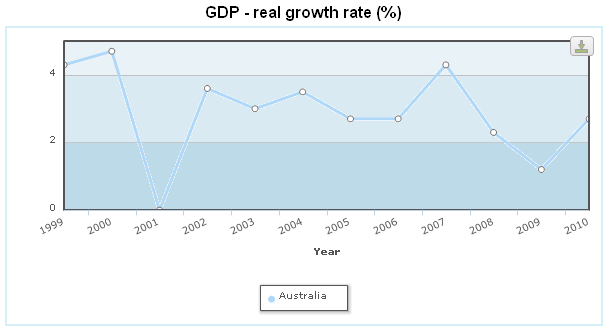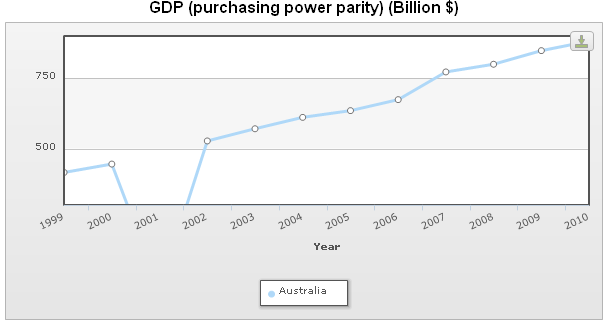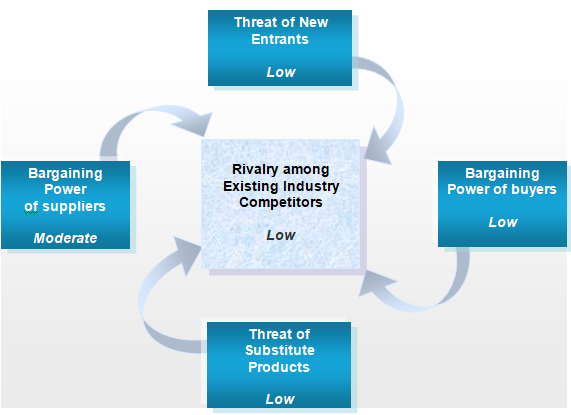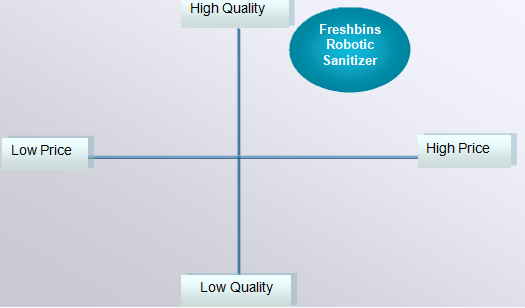Executive Summary
The aim of this paper is to provide marketing ideas for a new invention, Freshbins Robotic Sanitizer, which is a highly efficient product that will contribute to keeping the Australian cites clean, increasing the hygiene, and lowering the level of diseases caused by airborne germs.
It would work as a supplier of the Australian governmental and non-governmental organisations, which maintain cleanliness of the cities and appoints labour to work on field. This product will help such organisations to boost their efficiently by making them able to undertake huge number of bin cleaning programs at very short period of time and reducing the human efforts apart from saving time.
This product will also be offered to private individuals and families for carrying out their household activities; therefore, for having such a large group of customers, the revenues generated by this single product will be huge, even if the prices are set at a moderate level.
In order to provide marketing advices to the marketer of the product, this paper will focus on introducing the background information of the invention, conducting an environmental analysis consisting of the PESTEL analysis and the Porter five forces analysis, assessing the consumer behaviour analysis of the country, and concentrating on the segmentation, targeting, and positioning of the invention.
It would also construct appropriate product and pricing plans for the marketer followed by a few concluding remarks.
Introduction to the Background Information of the Invention
With the consideration of the prospective market demand and the idea of improving the waste disposal system of Australia and accordingly reinforce the efforts to ensure environmental sustainability, the newly invented Freshbins Robotic Sanitizer is chosen for been marketed at a large extent throughout the country.
According to The Australian Broadcasting Corporation (2011), Freshbins Robotic Sanitizer is an extremely contemporary bin clearing and disinfecting method invented by Paul Sewell, which uses three-facet visions to assist the mechanical limb to pick up a dustbin that is mechanically rinsed in an ozone-disinfecting process before being returned to the land; amazingly, the entire procedure needs about only 30 seconds.
The product has patented mechanized technology to convey one of the most protected, ecologically sustainable, and competent bin maintenance procedure in the globe; besides, the truck performs the entire task with the driver seated in cabin; most importantly, the truck can process 1000 bins in a day; therefore, the pickup ability of the robotic-arm is among its highly essential features.
The location of the dustbin is not a problem; it could even lie on land; however, the arm uses sensors to find a dustbin at 68 likely positions, whilst a second sensor identifies any creature or child’s movement around the dustbin; in addition, it saves vast quantities water (whist clearing one domestic-size bin manually requires about 100 litres of water).
However, it is important to note that although the product possesses a number of highly significant features, the success of marketing it can be doubtful if appropriate brand building strategies and awareness programs are not properly undertaken.
Hoeffler & Keller (2002) stated that brand awareness programs are necessary for marketing all sorts of products through different marketing campaigns; on the other hand, Hoyer & Brown (1990) pointed that in order to ensure repeat purchases of a product, constructing relevant marketing strategies are crucial in order to sustain for long run.
Environmental Analysis of Freshbins
PESTEL Analysis
Hitt, Ireland, & Hoskisson (2001) has noted that it is necessary for marketers to conduct PESTEL analysis before considering to launch any product in the market as a thorough environmental analysis assists to better understand the present conditions of the industry.
Moreover, Pearce & Robinson (2006) argued that without a proper environmental analysis, businesses might fail to apprehend actual circumstances of the industry and subsequently undertake poorly researched strategies leading to breakdown of sales and revenues. The PESTEL framework for Freshbins is illustrated below:

Political Factor
The current political circumstance of Australia is fairly unwavering with the government of the country trying to provide the best possible corporate responsive impression to each its national markets with an intention to boost the gross national product and per capita income.
More decisively, the government constantly promotes and aids the enlargement of the neighbouring companies by dictating the governmental financial institutions to provide sufficient loans to start up businesses after assessing their prospects, which makes it easier for Freshbins to enter.
Economic Factor
According to Index mundi (2011) in spite of the harsh situations arising from the global economic turmoil, the economy of Australia has recovered quite quickly and is still recovering to revive its industries and job sectors. The following figure shows the real GDP growth rate comparison for recent years, outlining that the GDP has recovered after the 2009 slump:

The graph below illustrates that the purchasing power parity of the Australian consumers is increasing, providing an optimistic outlook for Freshbins:

Socio-cultural Factor
The social and cultural aspects of Australia are highly diverse with the presence of people from many ethnic backgrounds; however, it is notable that Freshbins would stay beside the neighbouring communities and contribute to the societies by helping to better uphold a clean image to the world.
Technological Factor
Although the country has a booming technological sector, the industry competition is quite lower in terms of the market of Freshbins Robotic Sanitizer, as this is a pioneering innovation with highly equipped mechanics containing unique features not accessible in other similar products of Australia.
Environmental Factor
A number of environmental laws are present in Australia, which prevent the businesses of the country to perform activities associated with massive pollutions. However, it is notable that the marketer of Freshbins will be socially responsible to reduce adverse affects in the environment by introducing more and more eco-friendly technology to eliminate germs from bins.
Legal Factor
For every start up business in Australia, a few numbers of problems arise due to lawful barriers such as environmental and labour legislations associated with the formation of the business and related advertisements of the products.
Porter five forces of the Invention
Porter (2004) has noted that environmental analysis of the industry helps the marketers to sort out the dilemma associated with the anticipation of the level of competition and the position of the particular business in the industry. However, the competitive position of Freshbins in accordance with Porter’s five forces is presented below –

Threat of New Entrants
The threats of new entrants are quite low in the industry, because Freshbins has unique technology, which is also patent protected and so no new comers can quickly copy it and raise the level of competition.
Bargaining power of buyer
Bargaining power of buyers are low because there are no such services presently available in the Australian market where they can switch on.
Bargaining Power of Suppliers
The bargaining powers of suppliers are moderate because the supplies of the raw material needed to produce Freshbins come from much specialised producers who are lower in number, so the switching costs of the marketer of Freshbins are higher.
Rivalry among competitors
A low rivalry exist in the market owing to the individuality of the product and due to the fact that it is newly invented; moreover, even when slightly similar items are available, those are not as competent as Freshbins in terms of time saving, cost efficiency, and technology.
Threats of substitute product
No substitutes are currently available and it is not possible to bring one because of the patent protection provided.
Consumer Behaviour Analysis
According to Bowden (2009), in order to influence consumer behaviour, the process of customer engagement needs to be enough dynamic in terms of strategic implementations put forward. Oliver (1999) noted that the marketer should not only endow focus to influence consumer behaviour, but also ensure that the respective policies are affirming consumer loyalty.
Prus & Randall (1995), Recklies (2006), Percy & Rossiter (1992), and Cavero & Cebollada (1997) stated that understanding behaviour and acting accordingly by overseeing customer awareness could lead to successful branding for any product.
Conversely, successful branding reinforced by proper advertising will lead to repeat purchases of that item (Chi, Yeh, & Yang, 2009; Deighton, Henderson, & Neslin, 1994; and Macdonald & Sharp, 2000).
Because of all these reasons, customer behavioural analysis is essential; Sands & Ferraro (2010) identified that Australian customers have turned more intrusive, pessimistic, demanding, and impulsive, expending cautiously and seeking console in dependable and trustworthy brands; moreover, about fifty percent of Australians started to search internet before purchasing in-store, whereas, 89 percent expend about three hours researching the product’s features.
On the other hand, Sands & Ferraro (2010) added that seventy-nine percent Australian customers now try to purchase online, so it is necessary for the marketer of Freshbins to build a website and sell over internet, as it is expected that further eighty-three percent people will buy online by the next year, whereas the sales will reach $23.4bn by 2014.
Segmentation, Targeting, and Positioning
Segmentation
Johnson, Seholes, & Whittington (2006) stated that before marketing any product, a properly conducted customer segmentation and configuration of people of the targeted country would enable the marketer to obtain an idea about the probable clients and undertake marketing policies that would suit that market.
For example, through the age configuration of people, it would be easy to understand the numbers of adults in the economy, providing a rough idea about people requiring a household bin-cleaning machine.
Moreover, a rising growth rate of the economy would illustrate the future opportunity of having a further expanded customer base; so according to Kotler & Armstrong (2006), market segmentation is crucial; the customer segmentation by gender and age configuration of people of the country are outlined below:
Table 1: Customer segmentation. Source: Self generated from Index mundi (2011).
Targeting
The targeted customers of the Freshbins Robotic Sanitizer are the governmental and non- governmental organisations of the country, which act together with the vision of upholding hygiene in the national communities. This product will be supplied to such businesses in bulk, making high profit margins and keeping contribution over the socially responsible behaviours.
Another target group are the private individuals and families that suffer great troubles for carrying out their household activities because of the busy lifestyle of people. This would help working men and women to finish tasks that are highly time consuming and require touching dirt by hand.
Besides, rather than busy or working people, retired or unemployed people will also be the targeted group as most of them are old and frail and require help from technology to do it rapidly without any need for hard work.
Positioning
The following figure shows the market positioning of Freshbins; it shows that the product will be of high quality, and pricing will be higher because of uniqueness:

Product and Pricing Plans
The product has a number of distinctive features, for example, using ozone as a disinfectant, it reprocesses water and remarkably uses merely 63ml per dustbin, whereas manually it requires about 100 litres; moreover, no chemicals are required for the purpose; therefore, there is no chemical remains either creating risk to the operator or atmosphere.
In addition, no microbes will enter the atmosphere as the ozone even neutralises the toxicants in the waste; so, the wastes sent to the landfill is entirely germ-free; conversely, the operator has CCTV pictures of the entire activity and he manages them from a touch screen within the truck cabin.
All such features indicate that the pricing needs to be quite higher for this invention; Brealey & Myers (2002) noted that the more the uniqueness of the product, the more viable it is to set the price at high level, as no other substitute-items are available for consumers.
However, Malhotra (2009) identified that a proper marketing research is essential before setting the prices, which should include quantitative or qualitative questionnaires intended for surveying the prospective customers in order to assess the amount they are likely to spend over such an item.
Nevertheless, it can be argued that as this invention is completely new and the product is patent protected, it is not likely for any other businesses to bring out items with the same technology and offer those at lower prices gaining competitive advantage over Freshbins; as a result, there will be almost market domination by the Freshbins.
Therefore, it will be feasible for the marketer of Freshbins to focus on premium pricing at the initial stage; however, considering the performance of the product for a substantial time, the pricing strategy can be reconsidered by evaluating demand and production costs.
Conclusion
It is important to state that although Freshbins Robotic Sanitizer has great opportunities after penetrating the market, it is necessary to conduct a market survey to identify the consumer confidence of Australia and the extent to which they are able to spend over the item.
This is because although the economy has recovered from the recessionary impact, the current condition of the Euro zone crisis can get severe and spread over the Australian financial institutions, it which case, it would be tough for the marketer to collect the finance that is needed to enter the market, which includes costs such as outlays of advertising campaigns.
Reference List
Bowden, J. L (2009) The Process of Customer Engagement: A Conceptual Framework. Journal of Marketing Theory & Practice, 17(1): 63-74.
Brealey, A. R. & Myers, S. (2002) Principles of Corporate Finance. 7th ed. New York: McGraw Hill.
Cavero, S., & Cebollada, J. (1997) Brand choice and marketing strategy: An application to the market of laundry detergent for delicate clothes in Spain. Journal of International Consumer Marketing, 10(1): 57-71.
Chi, H. K., Yeh, H. R., & Yang, Y. T. (2009) The Impact of Brand Awareness on Consumer Purchase Intention: The Mediating Effect of Perceived Quality and Brand Loyalty. The Journal of International Management Studies, 4(1): 135-144.
Deighton, J., Henderson, C. M., & Neslin, S. A. (1994) The effects of advertising on brand switching and repeat purchasing. Journal of Marketing Research, 16(1): 28-43.
Hitt, M. A., Ireland, R. D., & Hoskisson, R. E. (2001) Strategic Management. 4th ed. South-Western Thomson Learning.
Hoeffler, S., & Keller, K. L. (2002) Building brand equity through corporate societal marketing. Journal of Public Policy & Marketing, 21(1): 78-89.
Hoyer, W. D. & Brown, S. P. (1990) Effects of Brand Awareness on Choice for a Common, Repeat-Purchase Product. Journal of Consumer Research, 17(2): 141-148.
Index mundi (2011). Australia Demographics Profile 2011. Web.
Index mundi (2011). Australia GDP (purchasing power parity). Web.
Index mundi (2011). GDP – real growth rate (%). Web.
Johnson, G. Seholes, K. & Whittington, R. (2006) Exploring Corporate Strategy: Text & Cases. 8th ed. London: FT Prentrice Hall.
Kotler, P., & Armstrong, G. (2006) Principles of Marketing. 11th ed. Prentice-Hall of India Private Limited.
Macdonald, E. K., & Sharp, B. M. (2000) Brand awareness effects on consumer decision making for a common, repeat purchase product: A replication. Journal of Business Research, 48(5).
Malhotra, N. K. (2009) Marketing Research- An Applied Orientation. 5th ed. Prentice-Hall of India Private Limited.
Oliver, R. L. (1999) Whence Consumer Loyalty? Journal of Marketing, 63(1): 33-44.
Pearce, J. A. & Robinson, R. B. (2006) Strategic Management. 8th ed. London: McGraw-Hill.
Percy, L., & Rossiter, J. R. (1992) A model of brand awareness and brand attitude advertising strategies. Journal of Psychology & Marketing, 9(1): 263-274.
Porter, M. E. (2004) Competitive Strategy. Export Edition. New York: The Free Press.
Prus, A., & Randall, B. D. (1995) Understanding your customers. Journal of Marketing Tools, 2(1): 10-14.
Sands, S. & Ferraro, C. (2010) 2010 Consumer Trends Report Australia. Web.
The Australian Broadcasting Corporation (2011) Freshbins: Invented by Paul Sewell. Web.